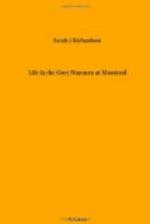Rules are laid down for the punishment of those who do confess. Innocent IV. commanded the secular judges to put heretics to torture; but that gave occasion to scandalous publicity, and now inquisitors are empowered to do it, and, in case of irregularity (that is, if the person dies in their hands), to absolve each other. And although nobles were exempt from torture, and in some kingdoms, as Arragon, it was not used in civil tribunals, the inquisitors were nevertheless authorized to torture, without restriction, persons of all classes.
And here we digress from Eymeric and Pena, in order to describe, from additional authority, of what this torture consisted, and probably, still consists, in Italy. Limborch collects this information from Juan de Rojas, inquisitor at Valencia.
“There were five degrees of torment as some counted (Eymeric included), or according to others, three. First, there was terror, including the threatenings of the inquisitor, leading to the place of torture, stripping, and binding; the stripping of their clothing, both men and women, with the substitution of a single tight garment, to cover part of the person—being an outrage of every feeling of decency—and the binding, often as distressing as the torture itself. Secondly came the stretching on the rack, and questions attendant. Thirdly a more severe shock, by the tension and sodden relaxation of the cord, which is sometimes given once, but often twice, thrice, or yet more frequently.”
“Isaac Orobio, a Jewish physician, related to Limborch the manner in which he had himself been tortured, when thrown into the inquisition at Seville, on the delation of a Moorish servant, whom he had punished for theft, and of another person similarly offended.




